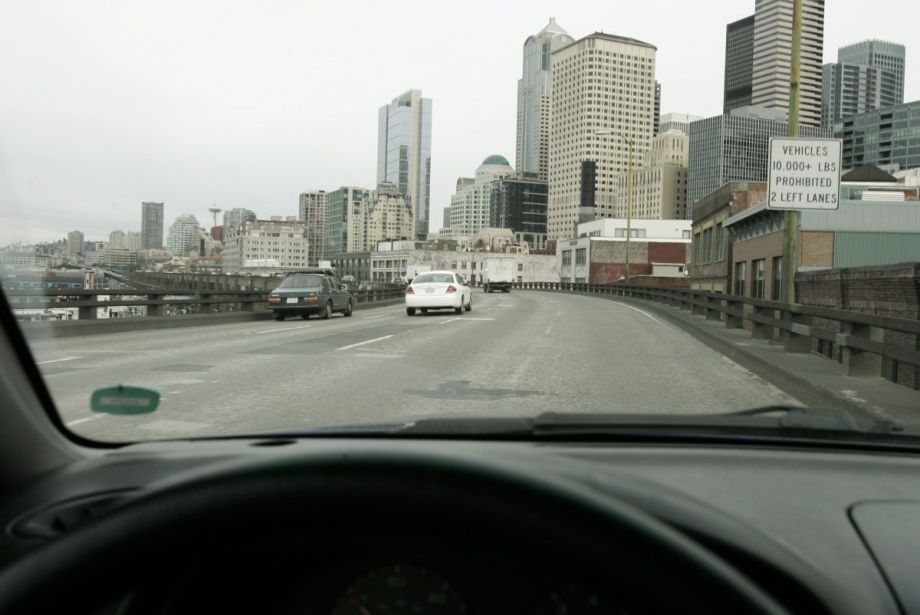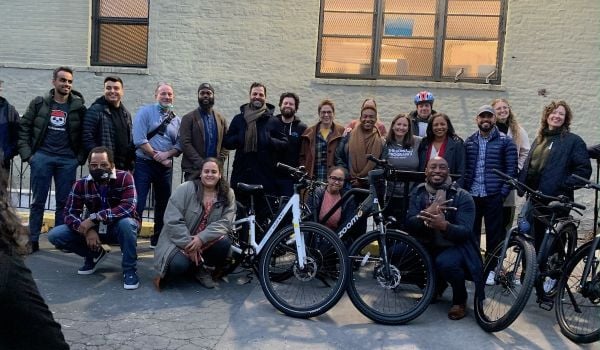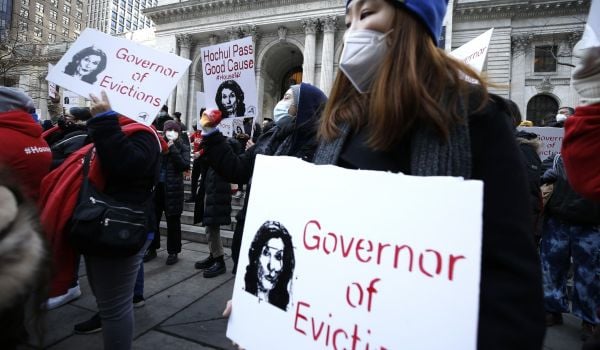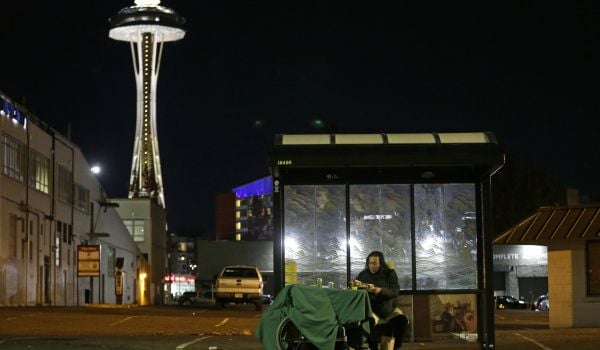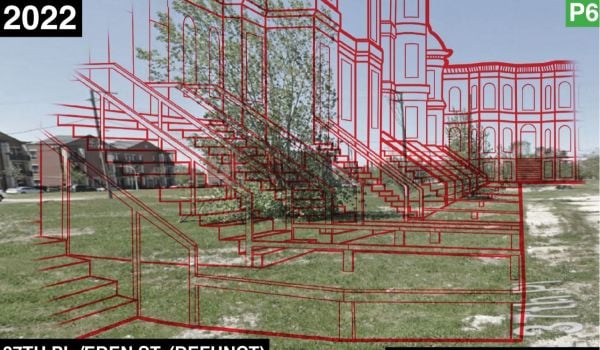On paper, Seattle is doing a pretty good job of getting commuters out of their cars. The 2017 Commute Seattle survey found that 48 percent of downtown workers use transit to commute, while just 25 percent drive alone and another 10 percent carpool or use ride hailing services.
But, like most cities, driving through downtown Seattle at rush hour is still a block by block crawl through gridlock. Traffic research firm INRIX ranked Seattle’s congestion ninth worst in the nation in its most recent scorecard. Not to mention, passenger vehicles still account for 45 percent of the city’s total greenhouse gas emissions.
In an effort to address both downtown gridlock and automobile emissions, Seattle may become the first city in the United States to implement a congestion pricing scheme. Found in just a few cities around the world, including London, Singapore and Stockholm, congestion pricing tolls drivers for entering certain zones of the city, typically the downtown core. In early April, Seattle Mayor Jenny Durkan announced her support for studying congestion pricing and potentially implementing a scheme by the end of her first term in 2021.
In response to a request for interview, the mayor’s office provided a link to a blog post from Durkan. In it, she highlights the impact congestion pricing has had in other cities and writes, “We can reinvent our approach to transportation while also reducing carbon pollution. … We can build this future with fewer cars, more transit, and less pollution.”
Responses to Durkan’s announcement have fallen along mostly predictable lines. Urbanists and transportation advocates are excited. Lots of drivers hate the idea of paying tolls. Low-income community advocates have voiced concern over the potential impact fees could have on poor people who live in areas with poor transit service and little choice to drive. Interestingly, supporters and opponents of congestion pricing have both expressed concern about the impact a new toll could have on low-income residents (though whether that support is in good faith isn’t always clear).
The Seattle Department of Transportation is currently conducting a study to determine how best to implement congestion pricing. Council Member Mike O’Brien pushed to fund the $200,000 study in this year’s budget out of concern that when the Highway 99 tunnel opens in 2019 and introduces a tolling, there will be spillover to downtown streets if they remain free.
In a statement last December, O’Brien’s office expressed concern that drivers would shift to local streets to avoid tolls, noting that early models indicate that such diversion could have a significant negative impact on congestion on city streets and be specifically detrimental to transit and freight travel times.
According to O’Brien’s office, one of the goals of the congestion pricing study is to determine the demographics of Seattle drivers and who’s driving at peak hours as a baseline for creating an equitable tolling scheme. As is the case with sales and property taxes (the primary funding mechanism for government services in income taxless Washington), without some sort of price break or exemption, congestion pricing could be regressive with lower-income residents paying a higher share of their income to the fee compared with wealthier residents.
Katie Wilson, general secretary of the grassroots Seattle Transit Riders Union, says, “I share the concerns expressed by a number of organizations and people about equity. We need to make sure this doesn’t negatively impact low-income car drivers that don’t have a better option,” whether because their job isn’t near transit or their neighborhood has poor transit service.
Still, she says, “I think it’s definitely worth studying. It’s a very interesting idea. Certainly with the challenges ahead of us with transportation disruption and traffic congestion we need to be thinking big and this is a big idea.”
London, Stockholm and Singapore offer insight into the potential positive impacts of congestion pricing, as well as elements necessary for a more equitable tolling scheme.
In London, drivers pay a flat £11.50 (about US$16) to enter the center city on weekdays from 7 a.m. to 9 p.m. There are exceptions for taxis and Uber drivers, electric vehicles, drivers with disabilities among others. A 2013 study found that in its first decade, the tolls reduced traffic levels by 10 percent. During that period, the tolls generated £2.6 billion in gross revenue, about £1.2 billion of which was invested in public transit, road and bridge improvements and walking and cycling infrastructure.
There is some agreement among advocates and transportation experts that the regressiveness of congestion pricing can be offset to some extent if funds are used to improve public transit networks and levels of service. Wilson wants to see the city use funds for transit investments, significant expansion of the free fare program and bicycle and pedestrian infrastructure investments. Though Durkan stated she wants to see a future with fewer cars and more transit, she has recently put the downtown streetcar project on hold and delayed expansion of parts of the downtown protected bike lane network until 2021.
Stockholm’s scheme uses variable pricing depending on the time of day from a little over US$4 at peak hours to about US$1.30 in the middle of the day. There is no charge on weekends, holidays or at night and there are also exceptions for certain types of vehicles and drivers. A study of the scheme found that traffic levels dropped 20 percent after implementation. Unsurprisingly, with fewer cars on the street, air quality improved with about an 8 percent drop in nitrogen dioxide and a 15 percent drop in the amount of soot and particulate matter.
Using peak and non-peak hour pricing is another way to potentially make congestion pricing more equitable. Though we won’t know exactly who drives when in Seattle, an analysis of American Community Survey data from Portland, Oregon gives a sense. In that analysis, City Observatory found that overall, “the median [family] income of those who commute to work by car is more than 50 percent greater than those who aren’t workers or who travel by other modes.” At peak hours, the median family income is $85,000, 20 percent higher than those who drive for work at other hours. The findings are explained in part by the fact that some low-income residents who rely on cars for work at service jobs or for in-home care or construction don’t work 9 to 5 hours.
None of the cities with existing congestion schemes have offered a price break based on income, an idea floated by O’Brien and others. It is likely complicated to do so. Wilson thinks it could potentially be connected to the low-income transit card program ORCA LIFT, but says making registration for discounted congestion tolls overly burdensome for people is also not ideal.
The Seattle Department of Transportation is aiming to complete its congestion pricing study by October. Once it’s complete, it’s sure to be a heavy political lift to get a congestion pricing scheme in place.
While Seattle could be the first U.S. city to implement congestion pricing, it’s not the first to discuss it. New York has been debating the issue for a decade now. San Francisco has been studying the issue for even longer.

Josh Cohen is Crosscut’s city reporter covering Seattle government, politics and the issues that shape life in the city.

